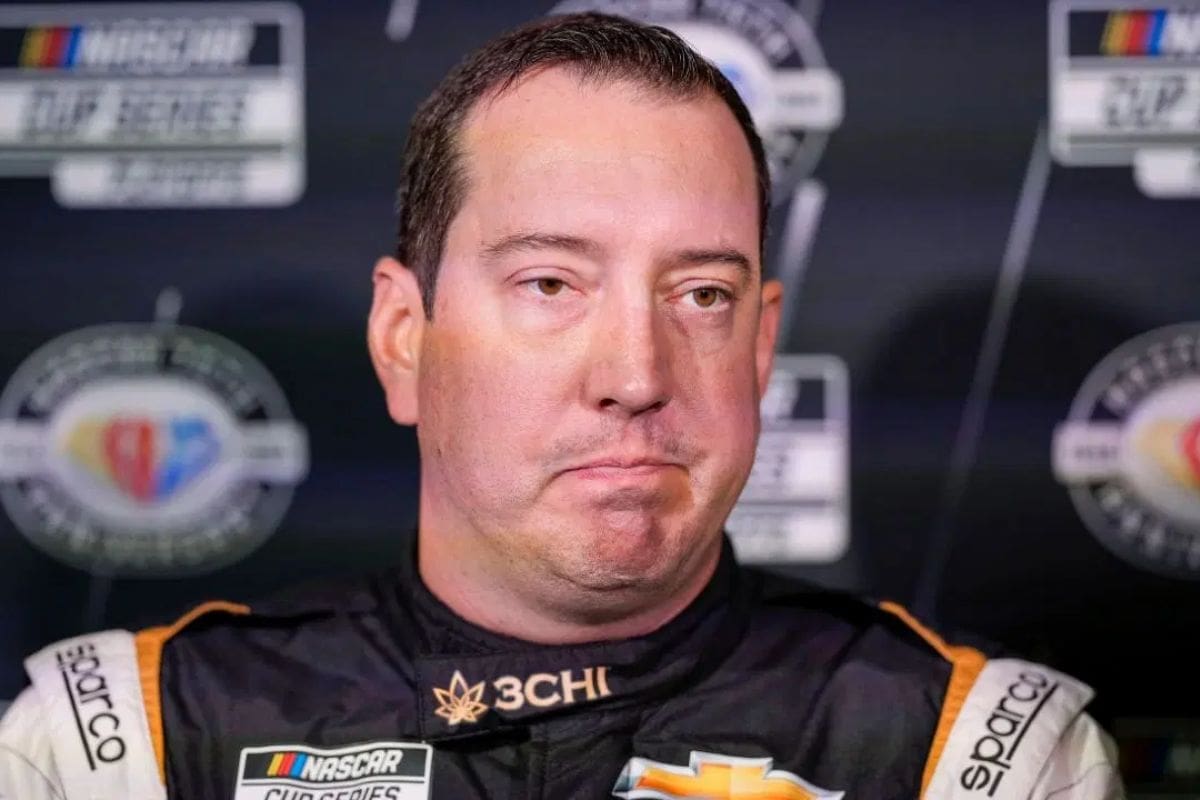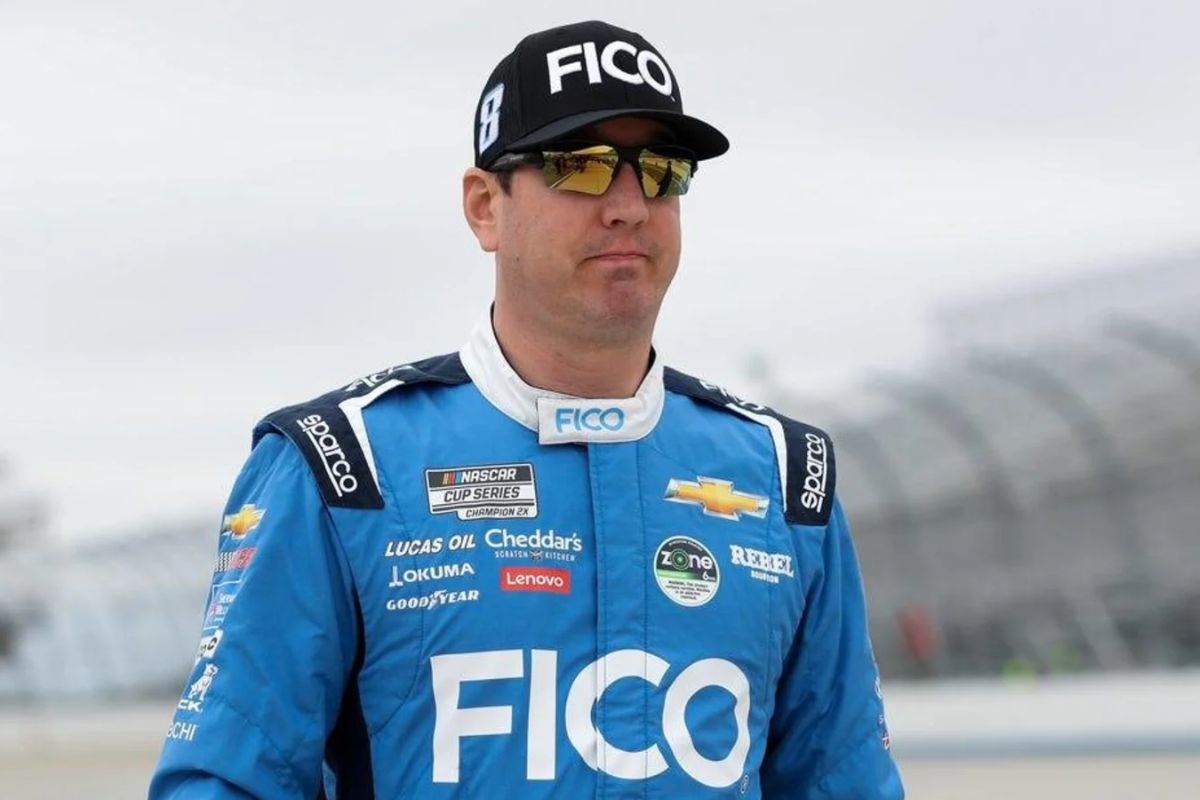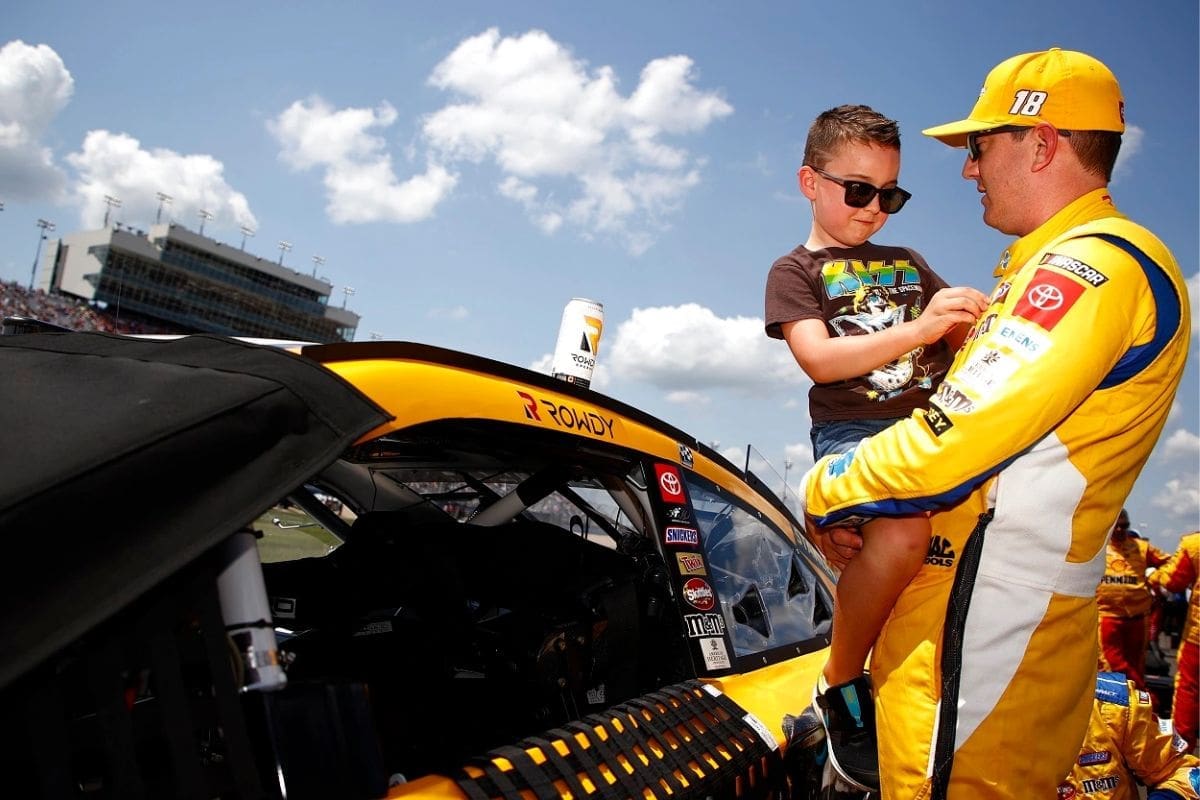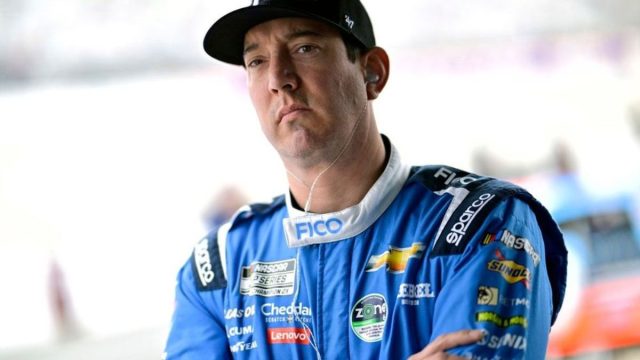Kyle Busch Crashes at Indy Tire Test: Kyle Busch‘s recent crash at the Indianapolis Motor Speedway during a tire test has sparked significant concern within the motorsport community. This incident, which did not result from tire failure, has nonetheless amplified the discourse surrounding safety protocols in high-speed testing environments. As Busch’s chevrolet/”>Chevrolet Camaro ZL1 suffered extensive damage, questions arise about the adequacy of current safety measures and the implications for future testing sessions.
Key Highlights
- Kyle Busch crashed in Turn 2 during a critical tire test at Indianapolis Motor Speedway.
- The crash raised concerns about the risks associated with high-speed tire testing.
- Busch’s No. 8 Chevrolet Camaro ZL1 sustained significant damage, but he was uninjured.
- Goodyear confirmed that the crash was not caused by tire failure.
- The crash disrupted team preparations and called into question tire compound reliability.
Tire Test Incident at Indianapolis Motor Speedway
During a crucial tire test session for the upcoming Brickyard 400 at Indianapolis Motor Speedway, Kyle Busch experienced a significant setback when his No. 8 Chevrolet Camaro ZL1 crashed in Turn 2. This incident, involving one of NASCAR’s premier drivers, has sparked a wave of concern within the motorsport community and highlighted the inherent risks associated with high-speed testing.
Tire testing sessions are vital in ensuring peak performance and safety for race day. Representatives from Chevrolet, Ford, and Toyota were present, each aiming to gain a competitive edge through precise data collection and analysis. The significance of these sessions cannot be overstated, as they offer teams the opportunity to fine-tune their setups, understand tire wear characteristics, and make necessary adjustments to their vehicles.
Kyle Busch’s participation in this test was a strategic move by Richard Childress Racing, aiming to utilize his extensive experience and skill to gather valuable insights. The crash, therefore, not only disrupts the team’s preparation but also raises questions about the reliability of the tire compounds being tested at such high speeds.
The Turn 2 incident highlights the delicate balance between pushing the limits and maintaining control. It serves as a reminder of the unpredictable nature of motorsport, where even the most seasoned drivers can face unforeseen challenges.
This event will for sure lead to a thorough review by both the team and tire manufacturers, aiming to identify any contributing factors and prevent similar occurrences in the future.

Busch’s Crash Details
Kyle Busch’s crash in Turn 2 resulted in significant damage to his No. 8 Chevrolet Camaro ZL1, with the vehicle hitting the outside wall driver’s-side-first. The incident unfolded during a tire test session at Indianapolis Motor Speedway, raising immediate concerns among his team and fans. Despite the severity of the impact, Busch demonstrated remarkable resilience, managing to exit the stricken vehicle under his own power.
Kyle Busch has crashed in nascar testing at Indianapolis #NASCAR pic.twitter.com/vEXeUuErtv
— Rexton Kemp (@rexton787b) June 4, 2024
Busch’s quick egress from the mangled car was a confirmation of both his composure and the safety advancements in modern NASCAR vehicles. Following standard protocol, he was immediately evaluated at the infield care center. Fortunately, the evaluation concluded with Busch being released without any reported injuries, providing a significant relief to stakeholders in the NASCAR community.
The crash, while alarming, was not attributed to tire failure, as confirmed by Goodyear. This clarification is significant, given that tire performance and reliability are paramount during such tests. The absence of tire-related issues shifts the focus to other potential factors, such as track conditions or vehicle setup, that might have contributed to the mishap. Analyzing these elements will be critical in understanding the root cause of the crash and preventing future occurrences.
Busch walk away unscathed emphasizes the effectiveness of current safety protocols but also serves as a reminder of the ever-present dangers in motorsport. As the investigation progresses, detailed scrutiny will be necessary to glean insights and improve the safety and performance of both the vehicle and the tires in future tests.
Continued Testing Efforts
Resilience and perseverance characterized the continued testing efforts at Indianapolis Motor Speedway, as Denny Hamlin and Todd Gilliland resumed their critical roles in tire evaluation for Goodyear. Despite the setback caused by Kyle Busch’s crash, the focus swiftly shifted to making sure the testing process remained on track.
Both Hamlin, representing Toyota, and Gilliland, representing Ford, are scheduled to resume testing on Wednesday, weather permitting. Their involvement is essential to Goodyear’s mission of developing an ideal tire compound for the upcoming race weekend on July 21.
- Durability: Evaluating the tire’s capacity to withstand the demanding conditions of high-speed racing without compromising performance.
- Grip: Assessing the tire’s traction capabilities to improve driver control and safety on the varied surfaces of the Indianapolis Motor Speedway.
- Consistency: Making sure uniform performance levels across different racing conditions to maintain fairness and competitiveness.
Hamlin and Gilliland’s expertise brings a wealth of experience and detailed feedback, indispensable for fine-tuning the tire compounds. Their collective insights will help Goodyear strike the critical balance between durability, grip, and consistency, thereby improving race performance and safety.
The tire test’s success hinges on meticulous data collection and analysis, with every lap providing valuable information. The collaborative effort between the drivers and Goodyear engineers is a reflection of the motorsport community’s commitment to continuous improvement and innovation.
Busch’s Recent Struggles
Plagued by a series of setbacks, Kyle Busch’s recent struggles have amplified the stresses of an already challenging NASCAR season. Currently positioned 19th on the NASCAR Cup Series Playoffs Grid, Busch finds himself in a precarious situation, needing to close a 20-point gap to secure a spot in the playoffs. The tension is heightened as the Toyota / Save Mart 350 at Sonoma Raceway approaches, a critical point in his campaign.
Busch’s performance at the Enjoy Illinois 300 was a stark reflection of his tumultuous season. Involved in a collision with Kyle Larson, Busch suffered his initial Did Not Finish (DNF) of the year, resulting in a dismal 35th-place finish. This incident not only cost him valuable points but also disrupted his momentum at a vital time.
Moreover, the recent crash during the Indy tire test has exacerbated concerns about Busch’s trajectory this season. This incident highlights the unpredictable nature of motorsports, where one misstep can greatly alter a driver’s fortunes. The crash has added another layer of complexity to Busch’s already intricate path to the playoffs.

Outlook and Recovery
Amidst a season fraught with adversity, the focus now shifts to the strategies and recovery plans that will define Busch’s outlook for the remainder of the NASCAR Cup Series. With the Indianapolis Motor Speedway incident still fresh in memory, the NASCAR community is keenly observing how Busch will navigate the path ahead, both on and off the track.
First and foremost, Busch’s immediate health and fitness are paramount. The team will prioritize his medical evaluation and any necessary treatment to guarantee he is in top condition to compete.
- Medical Assessment and Rehabilitation: Following a detailed medical evaluation, Busch will undertake a tailored rehabilitation program designed to expedite his return to peak physical condition.
- Mental Resilience Training: The psychological aftermath of such incidents cannot be overlooked. Engaging in mental resilience training will equip Busch with the tools to regain confidence and focus.
- Technical Adjustments and Team Strategy: The crash at the tire test highlights the need for meticulous technical adjustments and strategic planning. The team will analyze data to fine-tune vehicle performance and mitigate risks.
Given Busch’s experience and resilience, there is cautious optimism that he can overcome this setback. His ability to rebound from previous challenges augments the belief that he will return stronger and more determined. The upcoming races will serve as a litmus test for his preparedness and the efficacy of the recovery strategies implemented.

News in Brief: Kyle Busch Crashes at Indy Tire Test
The recent crash involving Kyle Busch during a tire test at Indianapolis Motor Speedway emphasizes the inherent risks associated with high-speed testing in motorsports. Despite the absence of tire failure, the incident highlights the necessity for strict safety protocols and thorough investigations to mitigate future accidents.
Continued testing efforts remain essential for enhancing performance and safety standards, particularly in view of Busch’s recent struggles. The motorsport community must prioritize these measures to guarantee favorable outcomes on race day.
Our Reader’s Queries
Q: How much is Kyle Busch’s salary?
A: Ranking the Highest-Paid NASCAR Drivers
| Rank | Driver | Total Compensation |
|---|---|---|
| 1 | Kyle Busch | $16.9 million |
| 2 | Denny Hamlin | $13.1 million |
| 3 | Kevin Harvick | $10.9 million |
| 4 | Martin Truex Jr. | $10.4 million |
Also Read: Kyle Busch Frustrated by RCR’s Struggles Under NASCAR Scrutiny
